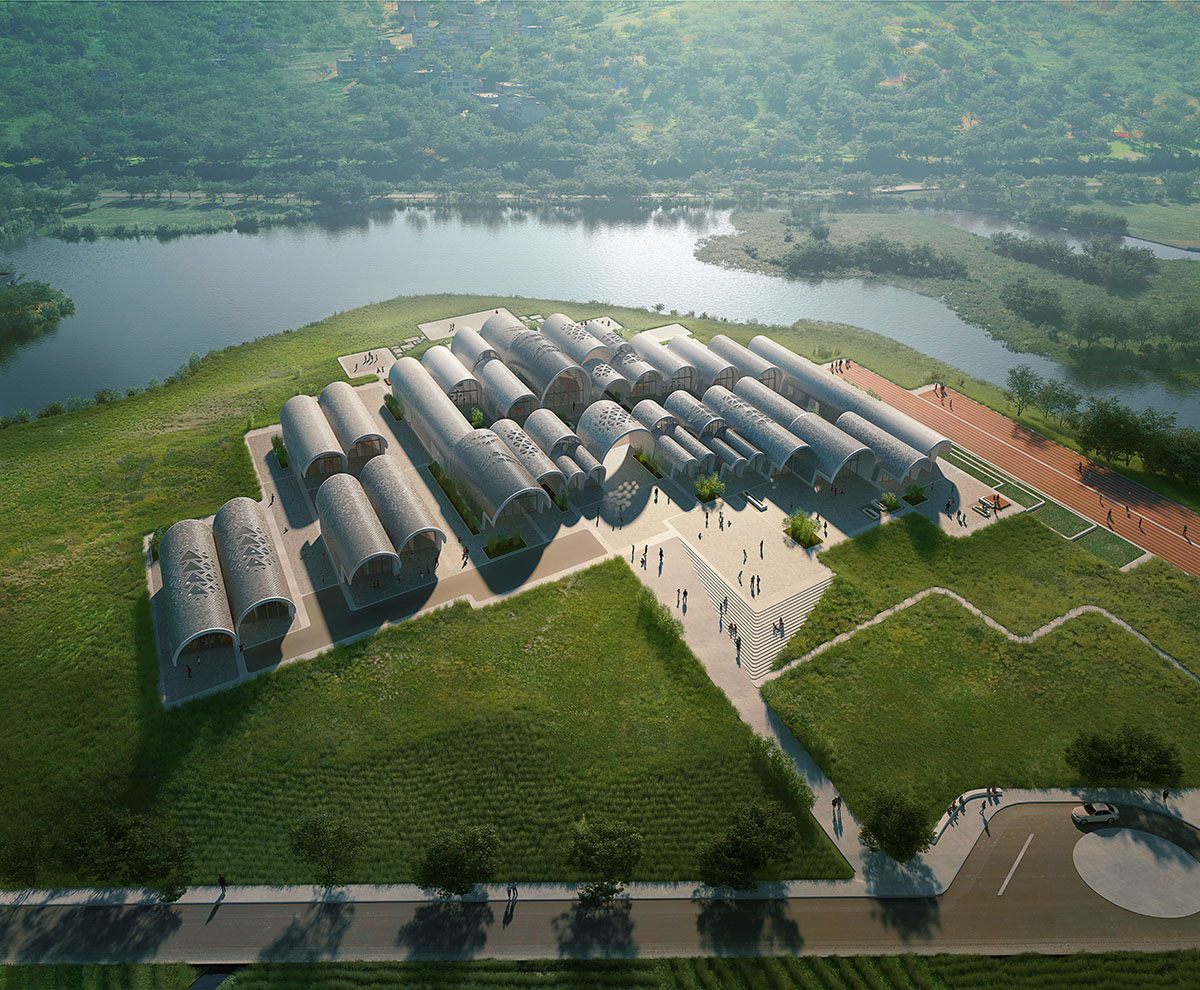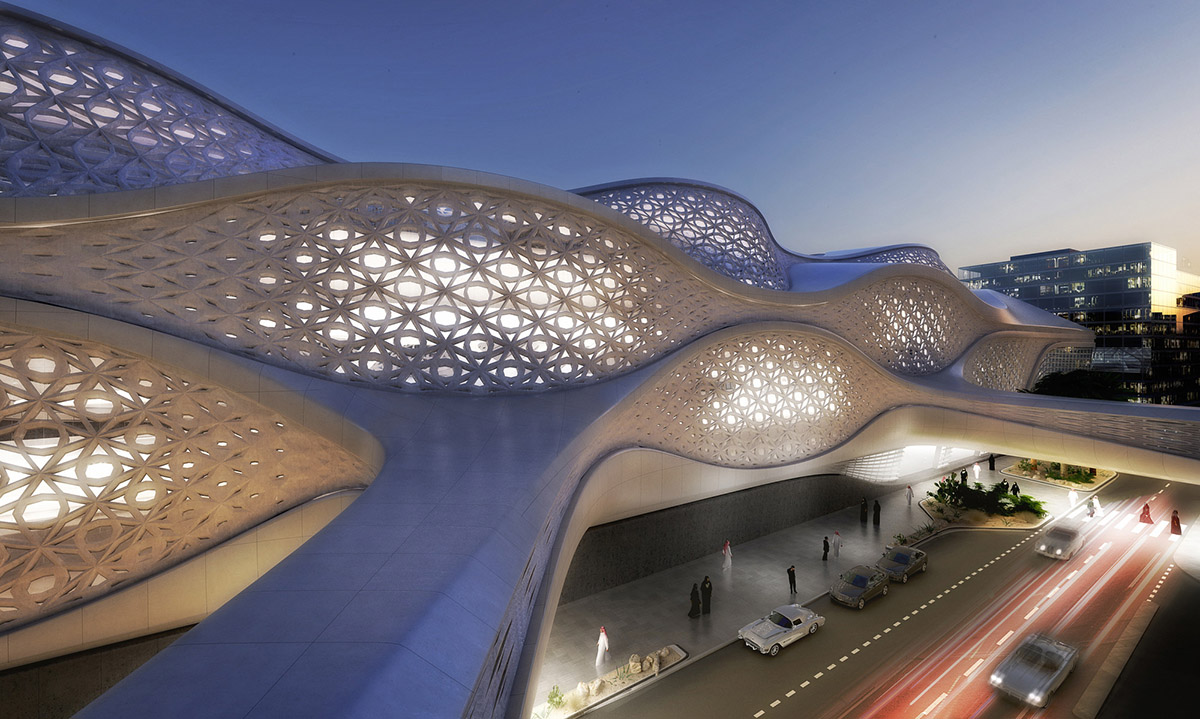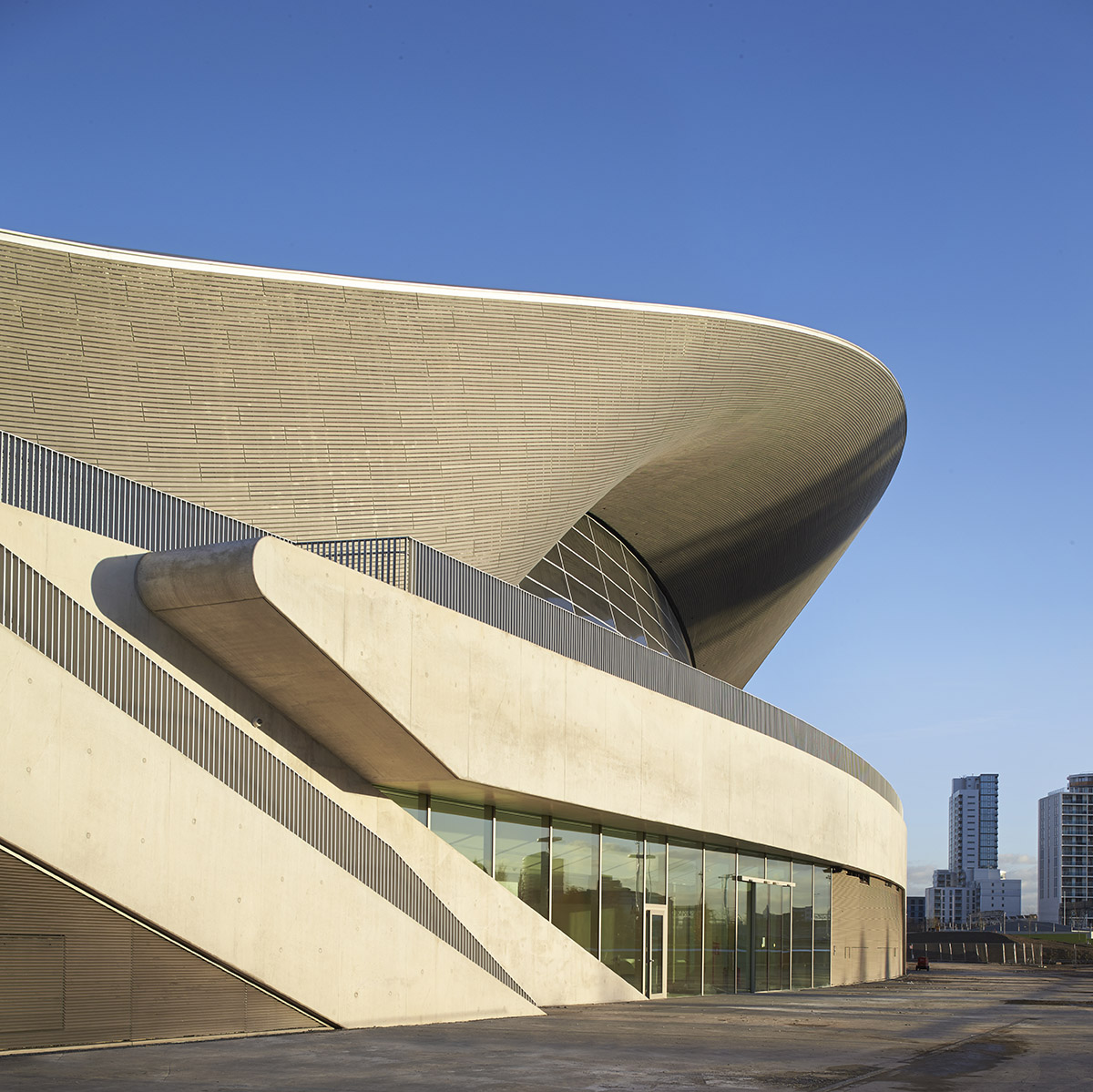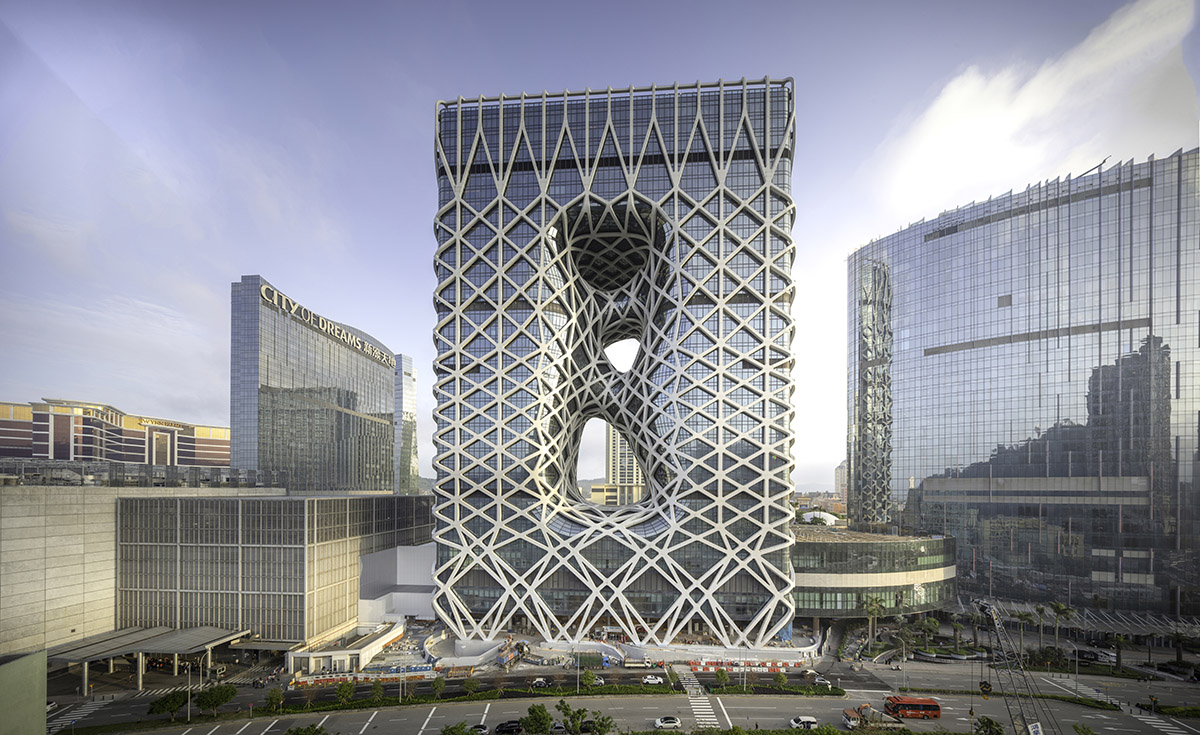Submitted by Berrin Chatzi Chousein
Exclusive: "The AEC Industry Still Hasn't Been Fully Digitalised Enough" Says Harry Ibbs Of ZHA
Ukraine Architecture News - Nov 19, 2018 - 23:34 11210 views

"The Architecture, Engineering and Construction (AEC) Industry still hasn't been fully digitalised enough and it is very far behind the Aerospace Industry, manufacturing industry, products and consumer goods industries," according to Harry Ibbs, Head of BIM and Workflows at Zaha Hadid Architects.
Architects and designers should look at the workflows of car developers or aerospace manufacturers to understand how they are using BIM successfully, according to Ibbs, who made a striking presentation at the Architecture of The Future Conference 2018 in Kyiv.
"I tend not to look at other architects how they are doing things. I look into the Automotive, Aerospace and Cinematic Industries," Ibbs told World Architecture Community in an exclusive interview at the Architecture of The Future Conference, held in October.

ZHA's new primary school complex in Jiangxi, China. The new educational institute will feature vaulted roofs that will combine the traditional construction techniques with a robotic construction on site to accelerate the construction process and reduce costs. Image © VA, courtesy of ZHA
"I'm working with partners that work with Boeing, Airbus, NASA because these companies have been doing what we call BIM, they call PLM, Project/Product Life-Cycle Management (PLM) for 35 years and have been using it successfully."
"We need owners, clients, developers, governments to start to realise built projects are not to be handled as one of pieces and begin to invest in research and development to evolve design and construction process to be handled like workflows used similar to the Aerospace and Automotive industries, improve optimisation and workforce efficiencies across all design stages and as built."
"Therefore, as a collective we have to begin working systematically in the construction industry to improve optimisations as the AEC is one of the greater contributors to the world’s pollution waste, as well as, we waste so much time," Ibbs continued.
Ibbs is responsible for strategically directing the office’s technology workflows, for better efficiencies and best practices across BIM, CPU, GPU computing and cloud collaboration since 2014.
Heading a team of computational designers, BIM Architects and Programming Designers, Harry has been responsible for managing and implementing all BIM projects, implementing standards, best practices, protocols, teams, writing BIM Contracts and oversees the creation of all BIM Execution Plans for projects.

ZHA's King Abdullah Financial District Metro Station is currently under construction in Riyadh, Saudi Arabia. Image courtesy of ZHA
Harry managed various projects at ZHA by setting the BIM standards, procedures, and active models for the King Abdullah Financial District Metro Station in Riyadh (BIM Level 2), the Bee’ah Headquarters office development in Sharjah (BIM Level 2), a luxury hotel and resort development in China, government buildings in North Africa (BIM Level 1) and residential projects in Brazil and Australia.

King Abdullah Financial District Metro Station in Riyadh and the building is expected to be completed in 2019. Image courtesy of ZHA
Harry is an Architect with 12 years of experience in all project phases and working on large-scale, high-profile international projects in Europe, Russia, China and the Middle East. He received his MArch of Urbanism and Architecture in 2010 from University College London and is a registered Architect in the UK.
His formal qualifications include Autodesk Revit and experience in Rhino, Cinema4dMax, Navisworks 3D, 4D, 5D & 6D coordination and clash detection reporting.

ZHA's Bee’ah Headquarters broke ground last year in UAE. Image © MIR, courtesy of ZHA
According to Harry, BIM should be a part of natural progression of any project, as he clearly stated at the Architecture of The Future Conference.
"I think it's just a natural progression of any project for designers and practices in the architecture and construction. We need to take accountability and provide more information to our clients and to the contractor," Ibbs added.
"A drawing can only say so much; a 3D model is the universal language of design as well as the enriched embedded Meta data. In this sense, a product is not constructed by only drawings, it is constructed through STL 3D model files, modelling optimisation processes, and after that, the manufacturing process is evolved through prototyping and advancing production manufacturing outputs."
"As designers we need to evolve in the entire process alongside the previous framework to catchup."
Furthermore, Harry thinks that technology should not be emphasised too much, otherwise it can drag architects into a deadlock in every project.
"Don’t put so much emphasis on the technology because you can go down the rabbit hole and waste energies and time," Ibbs added.
"There's a lot of software that enables you to explore these design languages but the emphasis should only be on the human touch and time spent in improving and studying the design typologies, fluid design form, and not hoping that you press the button and comes out of an algorithm because it doesn’t happen like that."
"It certainly does not work like that at ZHA as well."
In the full transcript of this exclusive interview, Harry Ibbs talks about the role of BIM in design processes and architecture practice, the working strategies in mutual relationships between the architects and the construction industry and the impacts of digital technology on today's architecture and productive workflow.
You may find the full transcript of our interview with Harry Ibbs below:
Berrin Chatzi Chousein: Could you please explain a bit about yourself and your position at Zaha Hadid Architects? What exactly are you doing at the firm?
Harry Ibbs: I've been working at Zaha Hadid Architects since 2014 and I was brought in the firm to implement building information modeling and find efficiencies what they are working for. So I'm a trained Architect, I live in London, was educated in London and worked in Germany. I have a background in construction industry and I worked in construction site as an Architect for a while. In a project process, contractors need to save money and time and when you work with a very technically-advanced design, it could be very challenging to construct a base. So the emphasis in my career was always in digitalized architecture.
If we come to Zaha Hadid Architects specifically, Zaha Hadid Architects have been designing in 3D and using digitalism for the past 25 to 30 years. So, freely design in digitalism was not new for Zaha Hadid Architects. And back to my career at ZHA, I started to work at ZHA in 2014 to implement working protocols to have the best practice and this model has been succedded in 5 years. And with that, I have built a team that specializes in streamlining projects to hand over to the contractors or the client that's requested BIM. BIM is implemented in everywhere wherever it's a governmental reason or a client request for finding their own efficiencies or implementing facilities management or project life cycle.
Berrin Chatzi Chousein: We are in a conference where technology determines and even shapes the future of architecture, and BIM is one of the topics at the conference. For those who do not know exactly what is BIM, can you explain us how does it work?
Harry Ibbs: BIM is a Building Information Modeling, actually it's a buzz word for me as a lot of people talk about it. But, in reality, how many people are really implementing it through the whole life cycle? I’m confident to say that a lot of people are using BIM but I think it has recently become a catch phrase of what might be here today and maybe gone in a decade. Unfortunately, the Architecture, Engineering and Construction (AEC) Industry still hasn't been fully digitalised enough and it is very far behind the Aerospace Industry, Automotive, manufacturing industry, products or consumer goods industries.
"The Architecture, Engineering and Construction (AEC) Industry still hasn't been digitalized enough and it is very far behind the Aerospace Industry, manufacturing industry, products and consumer goods industries"
I tend not to look at other architects how they are doing things. I look into the Automotive, Aerospace and Cinematic Industries. I'm working with partners that work with Boeing, Airbus, NASA because these companies have been doing what we call BIM, they call PLM, Project/Product Life-Cycle Management (PLM) for 35 years and have been using it successfully. Thanks to BIM, they are able to deliver a product, which can be an airplane for instance, thousands of times, and a great streamline of efficient workflow. I feel that great Architects or architecture firms shouldn't jump on this BIM bandwagon because the software developers of BIM are not able to educate us because they're learning. And, they are not learning from existing industries and instead are reinventing the wheel that doesn't need to be reinvented.
We can look at car developers like Mercedes or McLaren. And, this is what we do at ZHA. We visit those factories and we listen to their workflow managers, directors or technical directors. After that, I understand what their pipeline or lifecycle is. That’s what Architecture needs to go forward; why do we need to reinvent the wheel and give it a title called BIM? We just need to look at how car developers or aerospace manufacturers are doing this because they are using BIM/PLM successfully. We need owners, clients, developers, governments to start to realise built projects are not to be handled as one of pieces and begin to invest in research and development to evolve design and construction process to be handled like workflows used similar to the Aerospace and Automotive industries, improve optimisation and workforce efficiencies across all design stages and as built. Therefore, as a collective we have to begin working systematically in the construction industry to improve optimisations as the AEC is one of the greater contributors to the world’s pollution waste, as well as, we waste so much time.
When you look at aerospace and car industry, there is a waste pipeline and is far less than the construction industry because the manufacturer or the client is the reseller, is only one identity. For example, taking an example of Volkswagen, they don't want to waste their time because it doesn't benefit them in any workflow where there are so many agendas or stakeholders, such as an architect, client, developer, or government. So they need to educate and sit down to look at the benefits and assesments of the project and it's very difficult to get these people in one room to have these discussions.

ZHA's Sberbank Technopark facility in Moscow, received planning permission in June, 2018. Image © Anima, courtesy of ZHA
Berrin Chatzi Chousein: You have explained a little bit in your lecture how BIM reduces costs for design. But could you please elaborate this statement more? Does it really have advantages to optimize small-scaled buildings or large-scaled projects? What does it control during the design process?
Harry Ibbs: I wouldn’t say for BIM, it complements everything in design. I think it is the "workflow" what we want to call it BIM or anything. It complements the design leaders, the design direction by enabling the designers to analyze the time more efficiently and to reduce waste in aborted work because if you have any changes and if you do it parametrically.
Berrin Chatzi Chousein: Do you mean in the complex forms?
Harry Ibbs: But, what is complex? If you are able to design everything parametrically, you are able to reduce time wasted process if there are any last minute changes. So you follow the brief if you were able to understand what or how your designers parametrisize that. And in the whole plan, then you are able to make any last second changes and this would reduce time and which is a cost.

ZHA's London Aquatics Centre received over 2.5 million visitors since opening to the public in 2014. Image © Hufton+Crow, courtesy of ZHA
Berrin Chatzi Chousein: Could you please tell us how many years have ZHA been using the BIM technology? And why is it fundamental in ZHA’s projects?
Harry Ibbs: Zaha Hadid Architects have been using what is today called BIM since 2007. For me, BIM is digitalization of design, so arguably, ZHA has been using BIM and digitalization for 20+ years. I think it's just a natural progression of any project for designers and practices in the architecture and construction. We need to take accountability and provide more information to our clients and to the contractor.
So, a drawing can only say so much; a 3D model is the universal language of design as well as the enriched embedded Meta data. In this sense, a product is not constructed by only drawings, it is constructed through STL 3D model files, modelling optimisation processes, and after that, the manufacturing process is evolved through prototyping and advancing production manufacturing outputs. As designers we need to evolve in the entire process alongside the previous framework to catchup.

ZHA completed the Morpheus Hotel in Macau, China and opened this June. Image © Ivan Dupont, courtesy of ZHA
Berrin Chatzi Chousein: If we come into a general technology world in architecture, I would like to ask, how do you see the future of architecture in relation to the technology and thinking process and the relationship between the end product? Do you believe that did the over use of technology start to change architecture in a different way, not just in a mechanical process to work on any space but also change thinking on some sort of derivatives/similarities of the existing forms? Is it easier to produce everything with these alternative tools?
Harry Ibbs: Yes, and this conference has presented a lot on digital technology. I should say; don’t put so much emphasis on the technology because you can go down the rabbit hole and do very bad things.
"For technology, the emphasis should only be on the human touch and time spent in improving and studying the design typologies"
If you look at the history for example; when there is a technology leap, you see a lot of copycats or imitations that create things very badly. In the end, you see the world that flies on its organic forms. And, there's a lot of software that enables you to explore these design languages but the emphasis should only be on the human touch and time spent in improving and studying the design typologies, fluid design form, and not hoping that you press the button and comes out of an algorithm because it doesn’t happen like that.
It certainly does not work like that at ZHA as well. And if anyone thinks that these are happening across a script, like in Grasshopper, Dynamo, C#, Python, meaning that you press a button and these forms come out, is very mislead. And I think that would create a dangerous design future for humans, relying on a Machine or Artificial Intelligence (AI). To do these studies, I think it will take a lot of time for machine learning to assist that it will not need the human touch. The machine learning will collect more poor design decisions.
But I feel that we are definitely going down the approach to see if we can learn from a lot of machine learning in workspace, algorithms but this isn't my specialty. So I don't really want to divulge too much into this. But I have been in a lot of private conversations yesterday during the confrerence with other keynote speakers about how design firms are really investing in Artificial Intelligence (AI). And, we will see, I can’t predict the future. I just know right now it could take you down a path of disaster and waste of our time and money.
(-end of transcript)
Zaha Hadid Architects recently unveiled design for a smart city complex in the west of Moscow. The firm is currently working on a "floating" Philharmonic Concert Hall in Yekaterinburg, as the firm extends project portfolio in Russia.
Zaha Hadid Architects received World Architecture Community Awards in the 23rd Cycle with Messner Mountain Museum Corones in Italy and Investcorp Building, Middle East Centre at St Antonys College, University Of Oxford in the UK. The firm also won the WA Awards in the 25th Cycle with Mathematics: The Winton Gallery and Port House in Antwerp.
ZHA's King Abdullah Petroleum Studies and Research Centre in Saudi Arabia was also awarded in the 27th Cycle of WA Awards.
Zaha Hadid was one of World Architecture Community's first Members (since 2007) and Prof. Dr. Suha Özkan, Hon F AIA, Founder and President of World Architecture Community, wrote a very sincere and touching article for the late Zaha Hadid, following her passing away.
Top image: Harry Ibbs, courtesy of ZHA.
